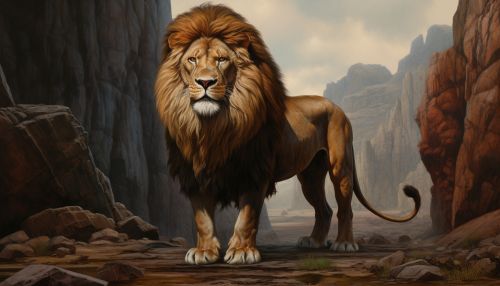Nemean Lion
Overview
The Nemean Lion was a legendary creature in Greek Mythology, known for its impenetrable hide and ferocious strength. It was said to reside in the region of Nemea, a place located in the northeastern part of the Peloponnese in Greece. The lion was eventually slain by Heracles (Hercules in Roman mythology) as the first of his Twelve Labors set by King Eurystheus.


Mythological Background
The Nemean Lion was considered a progeny of the monster Typhon and the half-serpent Echidna, who were known to spawn many of the most fearsome creatures in Greek mythology. Some sources, however, attribute its parentage to the moon goddess Selene and the god of the west wind, Zephyrus. The lion was nurtured by the goddess Hera, who set it in Nemea to terrorize the region.
Physical Characteristics
The Nemean Lion was renowned for its golden, glowing fur, which was impervious to the attacks of mortal weapons and its claws were sharper than any mortal's sword. Its size was said to be larger than that of any ordinary lion, with immense strength and speed.
The First Labor of Heracles
The slaying of the Nemean Lion was the first labor set upon Heracles by King Eurystheus. The lion was causing havoc in the region of Nemea, and Heracles was tasked to kill it and bring back its skin. The task was meant to be impossible, as the lion's hide could not be penetrated by any weapon.
Heracles first attempted to shoot the lion with arrows, but they simply bounced off its hide. He then tried to strike it with his club, but this too proved ineffective. Realizing that he could not defeat the lion with weapons, Heracles resorted to wrestling it barehanded. He managed to strangle the lion to death, after which he attempted to skin it with a knife, but the blade could not cut through the hide. It was then that the goddess Athena instructed him to use the lion's own claws to skin it. Heracles thus managed to complete his task and returned to Eurystheus with the lion's skin.
Legacy
The Nemean Lion's hide became a symbol of Heracles' victory and strength. He was often depicted wearing the lion's skin as a protective cloak in his subsequent adventures. The lion itself became a symbol of an insurmountable problem or enemy in Greek literature.
